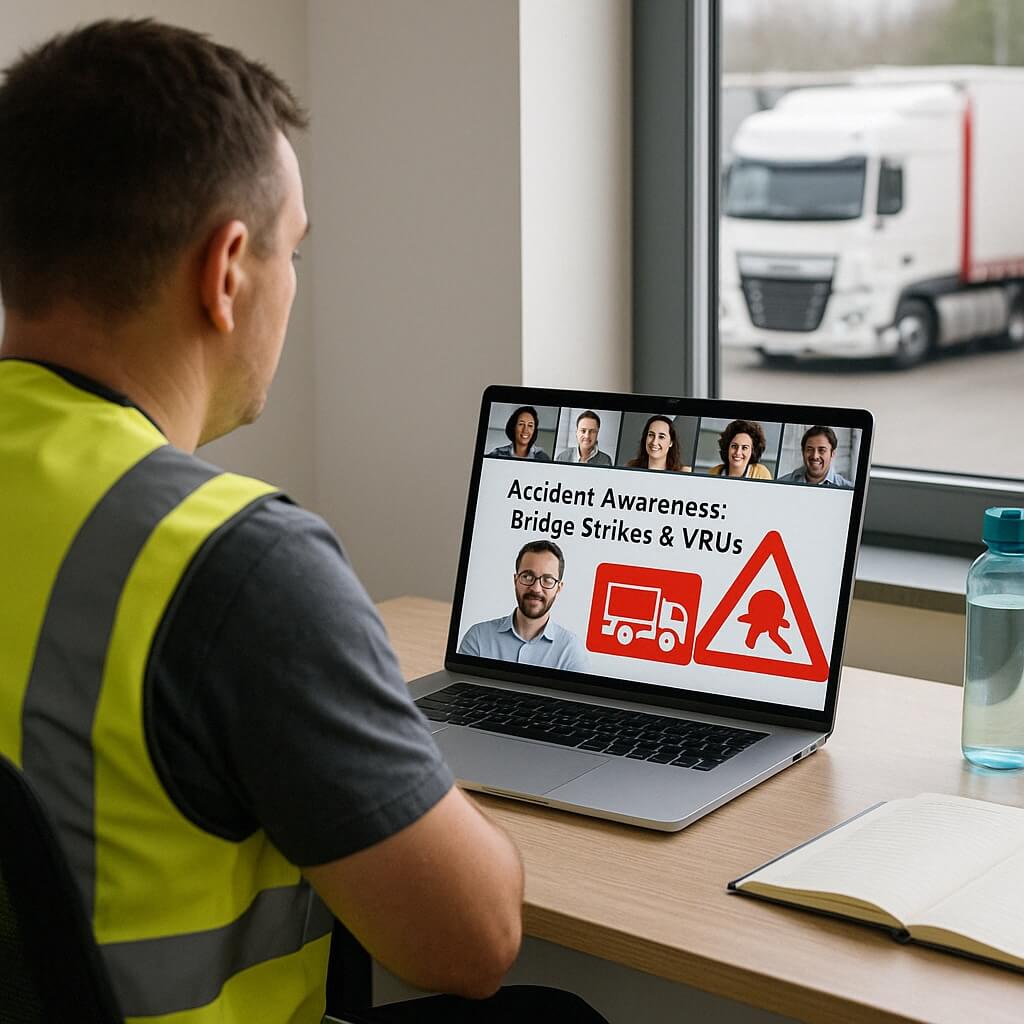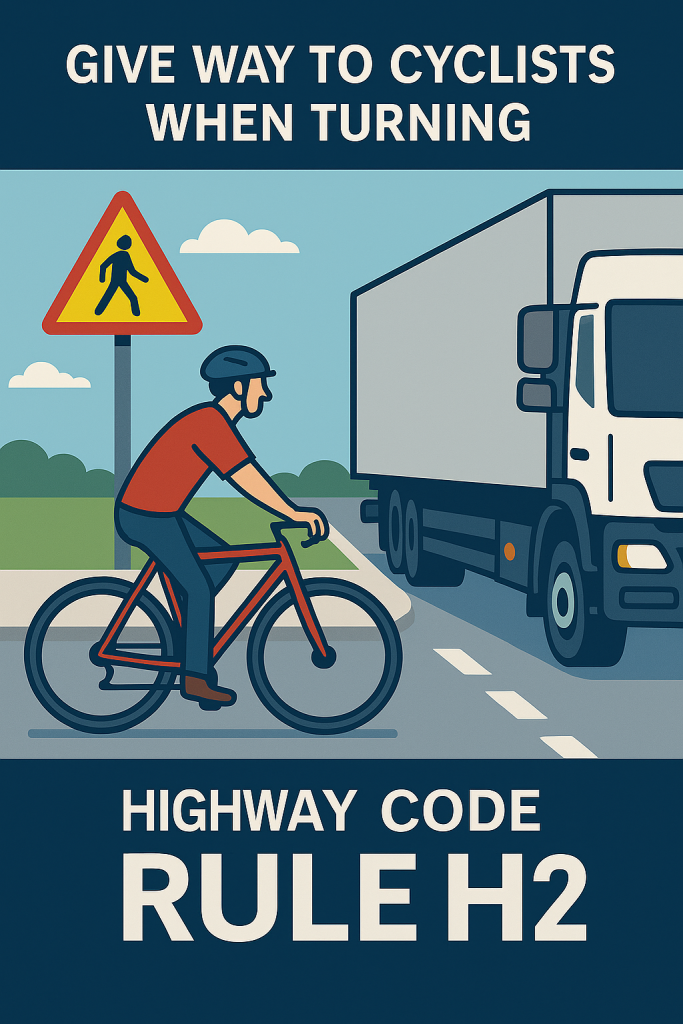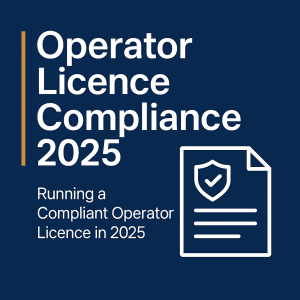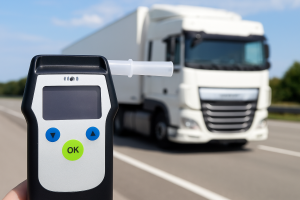Rule H2 and the Hierarchy of Road Users – What Professional HGV & PCV Drivers Must Know
Last updated:
The Highway Code changes (Rules H1–H3) set clear expectations for professional drivers around protecting Vulnerable Road Users (VRUs). This guide explains the hierarchy, Rule H2 pedestrian priority, and Rule H3 for cyclists/motorcyclists — with practical, compliant actions for truck and bus drivers.

For reference, the full and free version of the Highway Code (official online edition) is available to read online.
The Hierarchy of Road Users (Rule H1)
Rule H1 states that those who can cause the greatest harm have the greatest responsibility to reduce the danger they pose. Everyone must still behave safely, but heavier vehicles carry greater responsibility.
- Most vulnerable: Pedestrians (especially children, older people, and those with disabilities)
- Cyclists (including e-bikes) and e-scooter users
- Horse riders
- Motorcyclists
- Cars and light vans
- Greatest responsibility: LGVs/HGVs and PCVs
Implication for professional drivers: anticipate errors, give extra space, and avoid manoeuvres that place smaller road users at risk — even if you technically have priority.
Rule H2 – Priority for Pedestrians at Junctions
Key point: at a junction, give way to pedestrians crossing or waiting to cross a road into which or from which you are turning. This applies when entering/exiting side roads, depots, yards, bus stops, service areas and retail park entrances.
- Slow early, observe the kerb line and crossing points.
- Make eye contact where possible; be prepared to stop.
- Do not wave people across if it could endanger them; simply yield safely.
- Recheck mirrors and cameras before moving off.
Rule H3 – Protecting Cyclists, Motorcyclists & Horse Riders
Do not cut across riders going ahead when turning into or out of a junction or when changing lanes/direction. Avoid overtaking then turning left immediately afterwards. Expect nearside filtering in slow traffic.
- Commit to a turn only when your path is clear — not just the lane.
- Check nearside mirrors/cameras immediately before turning.
- Leave sufficient lateral clearance when passing (at least 1.5m at lower speeds; more at higher speeds and in poor conditions).

Accident Awareness, Bridge Strikes and VRUs Driver CPC course
— live online, DVSA-approved, and updated for Rules H1–H3.
Vulnerable Road Users (VRUs): Who & Where Risks Rise
VRUs include pedestrians, cyclists, e-scooter users, motorcyclists and horse riders. Risk is higher in urban areas, at school times, on shared-use paths, and anywhere with complex junctions or sight constraints.
- Urban turns: scan for nearside cyclists and pedestrians stepping out from between vehicles.
- Bus stops/school zones: expect late decisions and sudden crossing.
- Depot/yards: treat entrances as junctions; yield to crossing VRUs.
Real-World Scenarios for HGV & PCV Drivers
| Scenario | What to Do (Compliant with Rules H1–H3) |
|---|---|
| Left turn in slow urban traffic | Check mirrors/cameras for filtering cyclists; allow them to proceed before turning; commit only when path is clear. |
| Exiting a depot or yard entrance | Treat as a junction; give way to pedestrians/cyclists waiting to cross the mouth of the entrance. |
| Approaching zebra/pelican crossings | Be prepared to stop for pedestrians waiting to cross; avoid harsh braking by reading the scene early. |
| Shared-use paths near junctions | Reduce speed, increase observation, and yield to crossing cyclists/pedestrians. |
| Overtaking a cyclist before a left turn | Do not overtake if you will immediately turn; instead wait behind and turn safely after the cyclist clears the junction. |
Compliance, Conduct & Operator Responsibilities
Failure to apply the hierarchy and Rules H2–H3 can be considered a professional conduct issue. Investigations may review tachograph/telematics, camera footage, and training records. Operators and transport managers must ensure drivers are trained and supervised to current standards.
Staying Current: Driver CPC Modules Covering VRUs & H1–H3
All courses are delivered live online with same-day uploads. Content is maintained in line with current UK guidance and industry expectations.
Key Takeaway
The bigger your vehicle, the greater your responsibility. Applying Rule H2 and the hierarchy isn’t optional — it’s core to professional driving, safety, and compliance.








